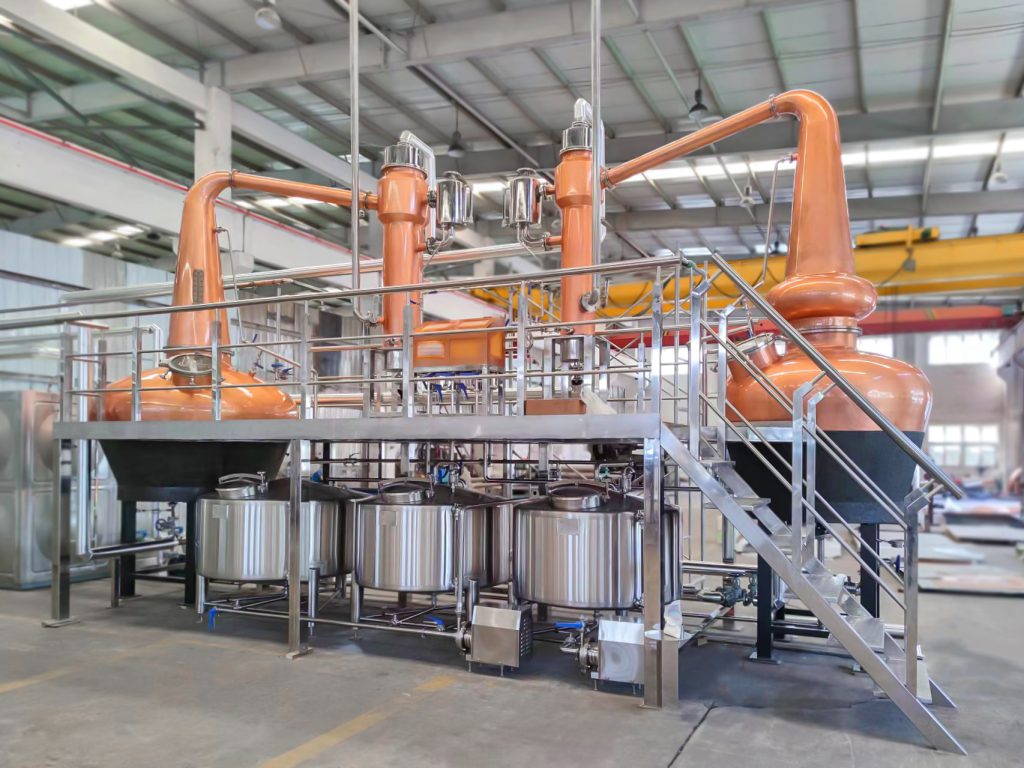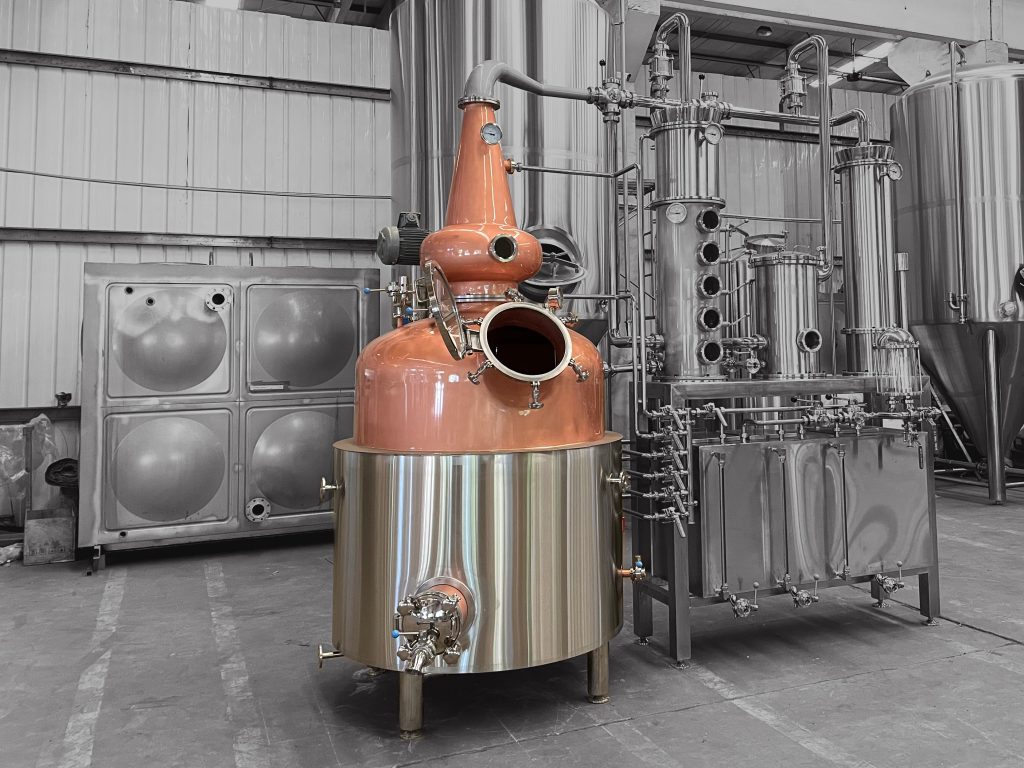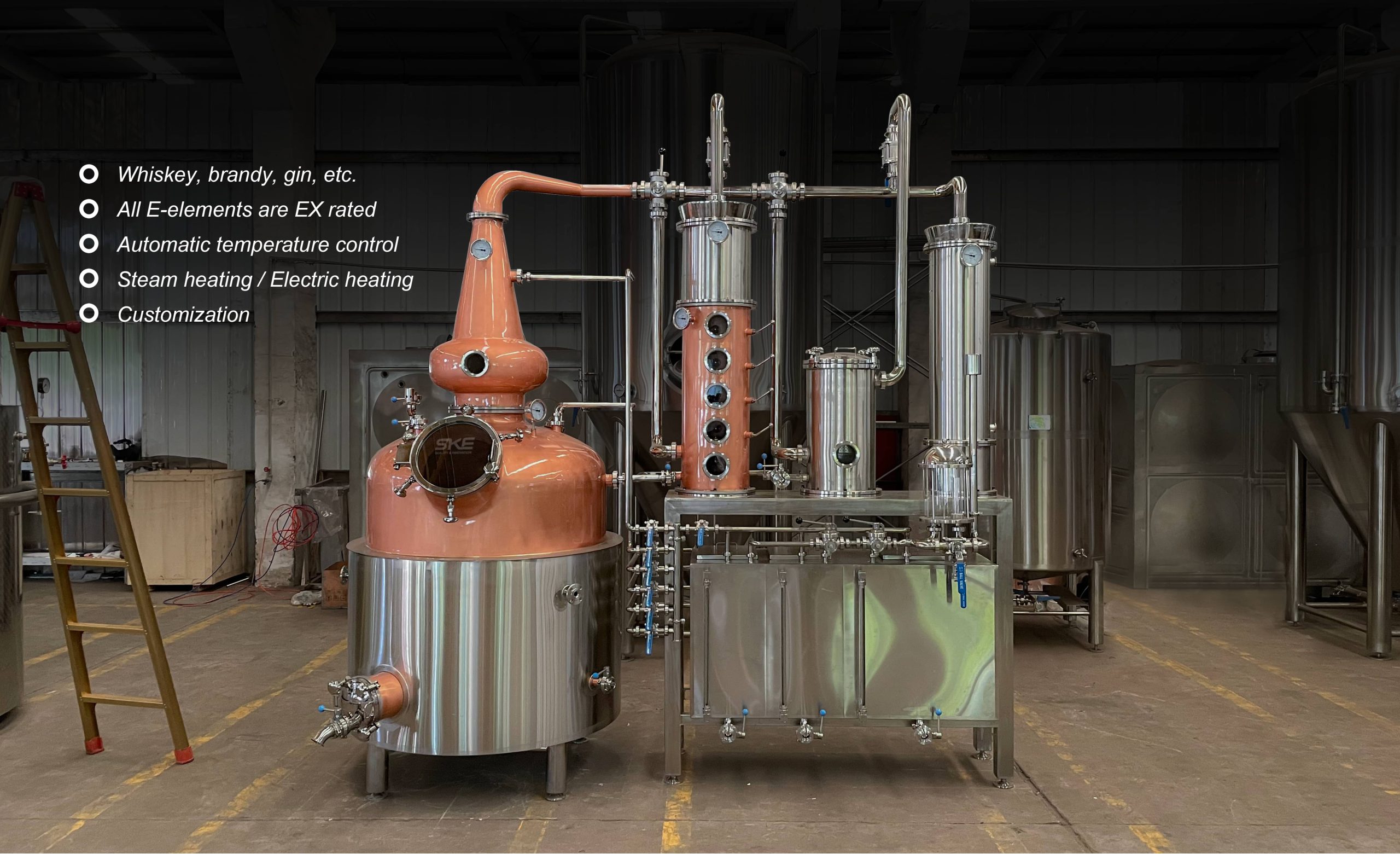Einführung
Wenn es um die Kunst der Destillation geht, ist die Wahl der richtigen Ausrüstung von größter Bedeutung. Insbesondere Brennblasen sind aufgrund ihrer Einfachheit und der Fähigkeit, hochwertige Spirituosen herzustellen, eine beliebte Wahl sowohl bei Hobbyisten als auch bei Profis. In diesem umfassenden Leitfaden untersuchen wir, worauf Sie bei hochwertigen Brennblasen achten sollten, damit Sie einen fundierten Kauf tätigen können, der Ihren Anforderungen entspricht. Von Materialien und Design bis hin zu Funktionalität und Preis behandeln wir alle wesentlichen Aspekte. Lassen Sie uns eintauchen.
Understanding Pot Stills: A Brief Overview

Pot stills are the traditional equipment used in the distillation process, known for their simple design and effective performance. They consist of a large pot or boiler where the mash is heated, a condenser where the vapor is cooled and condensed back into liquid, and connecting tubes. Here’s a brief overview of their main components:
- Boiler: The container where the mash is heated.
- Kondensator: The part where vapor is cooled back into liquid form.
- Connecting Tubes: Pathways for the vapor to travel from the boiler to the condenser.
The efficiency and quality of pot stills can vary significantly based on several factors, which we’ll explore in detail.
Material Matters: What Your Brennblase Should Be Made Of
The material of your pot still is crucial as it affects both the quality of your distillation and the longevity of the equipment. The most common materials used in pot stills are copper and stainless steel.
Kupferbrennblasen
- Pro: Excellent heat conductivity, removes sulfur compounds, produces a cleaner spirit.
- Nachteile: More expensive, requires regular cleaning.
Brennblasen aus Edelstahl
- Pro: Durable, less maintenance, more affordable.
- Nachteile: Less effective in removing impurities compared to copper.
| Material | Wärmeleitfähigkeit | Haltbarkeit | Wartung | Kosten |
|---|---|---|---|---|
| Kupfer | Exzellent | Mäßig | Hoch | Höher |
| Edelstahl | Gut | Hoch | Niedrig | More Affordable |
Design Features to Consider

When looking for pot stills for sale, design features play a crucial role in determining their efficiency and ease of use. Here are some key design aspects to consider:
Größe und Kapazität
The size of the pot still should match your distillation needs. Hobbyists may prefer smaller stills, while commercial operations require larger capacities.
Shape of the Pot
The shape of the pot can influence the flavor and quality of the distillate. Traditional bulbous pots are often preferred for their ability to produce richer flavors.
Ease of Assembly and Cleaning
Look for pot stills that are easy to assemble and disassemble for cleaning. Removable parts and wide openings can make maintenance more manageable.
Temperaturregelung
Accurate temperature control is essential for precise distillation. Some pot stills come with built-in thermometers, which can be a valuable feature.
Comparing Different Pot Stills for Sale
Here’s a comparison of some popular pot stills for sale, highlighting their key features, pros, and cons:
| Modell | Material | Hauptmerkmale |
|---|---|---|
| Copper King 500 | Kupfer | Excellent heat conductivity, rich flavor production |
| Steel Master 1000 | Edelstahl | Durable, low maintenance, built-in thermometer |
| SKE Distillation System | Edelstahl | Affordable, easy to clean, moderate heat conductivity |
Price vs. Quality: Finding the Right Balance
Investing in a pot still requires balancing price and quality. Higher-end models often come with better materials and additional features, but there are budget-friendly options that still offer good performance. Here’s what to consider:
- Budget: Determine how much you’re willing to spend.
- Verwendung: Consider how frequently and for what purpose you’ll use the pot still.
- Long-term Investment: Higher initial costs can save money in the long run due to durability and lower maintenance needs.
Abschluss
Choosing the right pot still involves considering material, design, capacity, and budget. By understanding these factors, you can find the perfect pot still for sale that meets your distillation needs. Whether you’re a hobbyist or a professional, investing in quality equipment will enhance your distillation experience and ensure you produce high-quality spirits. Always remember to maintain your pot still properly to extend its lifespan and optimize its performance.
FAQs
Q1: What size pot still should I buy?
The size depends on your distillation needs. For personal use, a smaller pot still (500-1000 ml) is sufficient. For commercial use, consider larger capacities.
Q2: Is copper better than stainless steel?
Copper is excellent for heat conductivity and removing impurities, but it requires more maintenance. Stainless steel is more durable and easier to maintain but less effective in impurity removal.
Q3: How do I clean my pot still?
Disassemble the pot still and clean each part with warm water and a mild detergent. For copper stills, use a specialized cleaner to remove tarnish and maintain conductivity.
Q4: Are built-in thermometers necessary?
While not essential, built-in thermometers provide accurate temperature control, which is crucial for precise distillation.
Q5: Can I use a pot still for essential oils?
Yes, pot stills can be used to distill essential oils. Ensure the still is thoroughly cleaned to avoid contamination of flavors.

